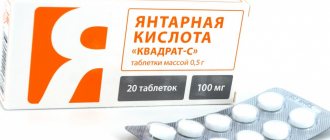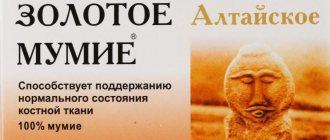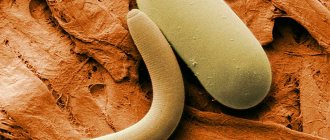Intoxication of the body is a general concept that characterizes poisoning with psychoactive and other substances. It implies a whole range of symptoms that develop against the background of poisoning. Intoxication can be determined both by external manifestations and symptoms, and by laboratory tests in some cases.
According to the WHO, “the term is most often used in relation to alcohol consumption - its equivalent in everyday speech is “intoxication”” (https://www.who.int/substance_abuse/terminology/acute_intox/ru/). However, it is important to understand that such a diagnosis can only be the main one in cases where poisoning is not associated with other disorders caused by the use of alcohol or psychoactive substances. In other words, the symptoms of one-time alcohol poisoning or accidental ingestion of toxic substances can be called intoxication. With constant intentional use, we will be talking about a dependence syndrome or a psychotic disorder.
There are many toxic components and types of intoxication that are not associated with drinking alcoholic beverages. Therefore, a classification was developed that determines the route of entry of harmful substances into the body and the mechanisms of development of poisoning.
Types of poisoning
Depending on the routes through which the poison enters the human body, scientists distinguish:
Inhalation poisoning
With this method of poisoning, toxic substances enter the bronchi and lungs with inhaled air.
Inhalation drugs include:
- poisoning by vapors of acids and alkalis;
- carbon monoxide poisoning;
- ammonia poisoning;
- household gas poisoning;
- chlorine poisoning;
- mercury vapor poisoning.
Similar poisonings are possible at chemical industry enterprises, metallurgy and other industries. Providing first aid in case of gas poisoning or toxic fumes at work, when there are many victims, is carried out in special protective equipment.
In everyday life, people more often suffer from carbon monoxide or natural gas leaks. First aid for carbon monoxide poisoning is to take the victim to fresh air!
Contact poisoning
In this case, toxins enter the body through the skin or mucous membranes.
Contact poisonings include:
- pesticide poisoning;
- fluoride salt poisoning;
- benzene poisoning;
- petroleum product poisoning;
- formaldehyde poisoning.
First aid for poisoning is as follows: the victim should be immediately removed from the area affected by the toxic substance, remove his clothes, remove the poison from the skin with a cloth or cotton wool, and wash the toxic substance from the skin with running water and soap.
Poisoning due to an insect, animal or snake bite
The poison enters through a skin defect (bite, wound). The first thing to do in case of poisoning at home is to place an ice pack on the bite site; if a limb has been damaged by the bite, then a venous tourniquet is applied above the bite site to reduce the spread of poison through the bloodstream.
Oral poisoning (by mouth)
Such poisonings include:
- food poisoning;
- alcohol poisoning;
- drug poisoning;
- mushroom poisoning;
- chemical poisoning.
First aid for poisoning should be started at the first signs of intoxication.
Gastric lavage and siphon enema are performed. If the patient is unconscious, in case of poisoning with caustic substances, lavage is carried out through a gastric tube.
The most common cases are household poisoning, food poisoning, alcohol poisoning and mushroom poisoning. The nervous, respiratory and digestive systems of the body are most affected by the effects of the toxic substance. Providing first aid for poisoning is aimed at stopping the effects of poison on the body.
The main condition for first aid in case of poisoning is emergency hospitalization in intensive care or toxicology departments, where antidote therapy and artificial detoxification are possible.
Choosing the right products
The goal of dietary nutrition after food intoxication is not only to replenish the body with nutrients. The diet reduces the load on the gastrointestinal tract, restores electrolytic balance, and accelerates the healing process of the mucous membrane.
During the recovery period you can use:
- soups and broths from vegetables and lean meats;
- lean fish and meat, baked or boiled;
- boiled and crushed porridges, for example, oatmeal, buckwheat, rice;
- low-fat milk and cottage cheese;
- wheat crackers, crackers, biscuits;
- chamomile infusions, dill water;
- boiled eggs and steamed omelettes.
Natural juices can only be drunk in diluted form. Wait until digestion is completely restored. Introduce familiar foods into your diet in small portions so as not to overload the gastrointestinal tract.
During the diet, give up:
- sausages, lard, fried, spicy dishes;
- bread, yeast baked goods, sweets;
- complex soups and rich broths;
- pickles, marinades, smoked meats;
- green apples, currants, radishes, radishes, sorrel;
- ketchup, mayonnaise, canned food;
- semi-finished products, sausages.
Citrus fruits, chocolate, mushrooms, spicy seasonings, vinegar, homemade sour cream, carbonated and alcoholic drinks are also prohibited.
First aid for food poisoning
In case of food poisoning, the “culprits” are most often foods contaminated with pathogenic microbes or containing microbial toxins. The source of infection can also be water contaminated with bacteria.
Symptoms of poisoning develop quite quickly - from half an hour to several hours after eating.
What to do in case of poisoning?
It is necessary to clear the stomach of the toxic substance as soon as possible. This can be done before the ambulance arrives, by washing the stomach with 1-2 liters of boiled water or a weak solution of potassium permanganate, and giving an anti-poisoning gel - Enterosgel.
In case of diarrhea, it is necessary to replenish fluid loss by giving the patient unsweetened tea and salted water.
First aid if a child is poisoned by poor quality food can be provided by parents.
What can be done:
- Rinse the stomach;
- Provide plenty of fluids;
- Give Enterosgel sorbent (safe and recommended from the first days of life);
- Call a doctor.
First aid for poisoning in adults also involves taking Enterosgel sorbent, which effectively absorbs toxins in the intestines. In the absence of diarrhea, the doctor prescribes an enema or the patient is given a saline laxative to remove the toxic substance from the intestines, and detoxification therapy is prescribed.
The main causes of food poisoning:
• toxic infections – staphylococcal toxicosis and botulism, mycotoxicosis, mixed toxic infections, etc.; • toxic organic and inorganic substances; • violation of food production technology and improper storage, non-compliance with temperature conditions; • contamination, contamination of food with bacteria; • products that have become toxic under the influence of various factors and pesticides, nitrates, herbicides, fungicides accumulated in the peel and core of vegetables, berries and fruits; • unwashed vegetables and fruits, poor food hygiene.
An excellent environment for the growth of bacteria are multi-component salads, brawn and aspic, meat dishes, desserts with a cream base, canned mushrooms and dried fish. If you have even the slightest doubt about the suitability of foods intended for human consumption, it is better to refuse them.
Alcohol poisoning
The first first aid for alcohol poisoning is gastric lavage. Thanks to this simple procedure, you can remove drunk alcohol and reduce its absorption in the stomach, thereby reducing alcohol intoxication. After cleansing the stomach of the remnants of “strong” drinks, you need to give the victim Enterosgel sorbent and place him under a blanket.
If a person is unconscious, it is necessary to urgently call an ambulance and lay him on his side - this will reduce the likelihood of vomit getting into the upper respiratory tract.
First aid for alcohol poisoning in a hospital setting involves detoxification therapy, restoring the functioning of vital organs and systems. In a good way, everyone should know what the symptoms of alcohol poisoning look like and what to do if they are detected.
First aid for mushroom poisoning
Inexperienced mushroom pickers often become victims of toadstool poisoning. Mushroom poison causes damage to the central nervous system, liver and kidneys. Therefore, first aid for poisoning with poisonous mushrooms should be provided by doctors!
How can you help a person before the doctor arrives?
After you have called an ambulance, first aid for mushroom poisoning at home consists of gastric lavage. It should be rinsed until the rinsing waters become clear. After this, you can give the victim Enterosgel sorbent.
Sample menu after poisoning
The first day after food poisoning is better not to eat anything. If you feel very hungry, you can drink a little rice water. It is better to use brown rice for cooking.
After the unpleasant symptoms disappear, you can eat little by little. To improve the functioning of the digestive system, adults follow a diet for 5-10 days after poisoning.
Let us give examples of therapeutic dietary nutrition used in the treatment of diseases of the digestive tract.
| Diet No. 1A Calorie content: 1900–2000 kcal | Diet No. 2 Calorie content: 2800–3000 kcal | |
| First breakfast | — steam omelet or soft-boiled eggs; - warm low-fat milk. | - oatmeal or semolina porridge; - low-fat cheese; - weak tea. |
| Lunch | - milk. | - rosehip decoction. |
| Dinner | — pureed oatmeal soup, steamed chicken fillet; - fruit jelly. | - vegetable or meat broth; — steamed cutlets from lean meat; - mashed potatoes; - dried fruits compote. |
| Afternoon snack | - milk cream; - rosehip decoction. | - rosehip decoction. |
| Dinner | - liquid rice porridge (crushed); - milk. | - Steamed fish; - rice pudding; - tea or cranberry juice. |
| Drink at night | - milk. | - kefir or yogurt. |
Recommended dishes also include vegetable soups, boiled porridges, except pearl barley and millet, baked meat puddings, and cottage cheese casseroles. It is advisable to grind porridges and soups with a blender. This way they will be better absorbed.
To prepare meat dishes, it is advisable to use veal, beef, turkey or chicken. Steamed meatballs, meat pate or casserole will be completely dietary dishes. You are allowed to eat fish balls and chicken breast. You can make puddings from berries and fruits; bananas and baked apples are also allowed.
As additional support for the body, you can use sorbents, for example, Fitomucil Sorbent Forte. Enterosorbent will remove harmful substances, cope with pathogenic microorganisms, and restore normal intestinal microflora. The drug contains five types of live probiotic bacteria, as well as psyllium and inulin.
First aid for carbon monoxide poisoning
Gas poisoning (CO) is a severe intoxication of the body, which can lead to severe damage to internal organs. According to statistics, carbon monoxide poisoning occupies a leading position among the causes of death from acute poisoning, so it should be taken extremely seriously.
Symptoms of carbon monoxide poisoning:
- Headache;
- Drowsiness;
- Chest pain;
- Redness of the skin;
- Hallucinations;
- Dry cough;
Severe gas poisoning is accompanied by loss of consciousness.
It is important to recognize these symptoms in time and start treatment at home in a timely manner!
Providing first aid for carbon monoxide poisoning
First of all, you need to take the victim out of the contaminated room into fresh air and free him from restrictive clothing. To reduce intoxication, give him Enterosgel sorbent and urgently call an ambulance.
First aid for carbon monoxide poisoning is the antidote - acizole. It is recommended to administer the drug as early as possible in case of poisoning of any severity.
Alcohol poisoning
Vomiting is the first sign of poisoning
Distribution of surrogate and intemperance in drinking alcoholic beverages can easily lead to poisoning. Its complication can be death. Signs of poisoning may include:
- loss of consciousness
- cardiac dysfunction
- severe vomiting
- blindness due to damage to the optic nerve
- labored breathing
- increased heart rate
Emergency measures that can be applied to a person who has been poisoned by alcohol do not differ from those for any poisoning. It is necessary to reduce the concentration of alcohol in the stomach. To do this, induce vomiting, wash the stomach with a solution of soda or manganese in a weak concentration. Before the ambulance arrives, the victim is taken out into the fresh air and freed from tight clothing, a tie, and a scarf.
To alleviate the condition, you can apply a cold compress or ice to his head. You can put mustard plasters on the back of the head, calves, feet, let them sniff ammonia, and wipe the temples with it. To enhance the effect, give a solution of ammonia in cold water to drink (10 drops of ammonia per glass of water). These measures should significantly improve the victim's condition.
Chlorine poisoning
The cause of poisoning with chlorine and its compounds can be violations of safety regulations in chemical laboratories or industrial accidents when containers with chlorine are damaged.
What symptoms of poisoning with chlorine-containing substances may bother the victim? First of all, this is swelling of the eyelids, oral mucosa, respiratory tract, shortness of breath, pain in the eyes, suffocation.
Timely first aid for chlorine poisoning can prevent a terrible complication - pulmonary edema!
What needs to be done? Remove the victim from the room saturated with chlorine vapors, remove clothing soaked in poison, wash exposed and damaged skin with soap and water, wash eyes and rinse mouth. After this, you should give the poisoned person the Enterosgel sorbent and call an ambulance.
First aid for drug poisoning
Drug poisoning can be accidental or intentional. Poisoning in young children occurs due to the fault of adults - tablets are sometimes in a place accessible to children. In case of poisoning at home, it is advisable to find out before the doctor arrives the medicine that the victim took and induce vomiting, then rinse the stomach with warm water and give Enterosgel sorbent.
Providing first aid will help avoid disorders of the cardiac, respiratory and nervous systems.
In a hospital setting, treatment with antidotes, control of intoxication and other resuscitation techniques are carried out to restore the function of internal organs.
How to take Enterosgel for children?
Children are recommended to take Enterosgel 3 times a day:
- 5 – 14 years – dessert spoon;
- 2 years - 5 years - tea.
- In case of severe acute poisoning, doctors allow a dosage to be doubled.
Enterosgel should be in every home medicine cabinet, especially in summer!
A few hours later, already in the hospital, the doctors repeat gastric lavage for the child, after which they give a saline laxative (magnesium sulfate in a dose of 15 - 20 g in 100 ml of water).
If the cause of intoxication is reliably known - in the early period of poisoning, antidote therapy is carried out - an antidote is introduced into the body. For example, ethyl alcohol is used for wood alcohol poisoning, the mushroom venom of the toadstool is neutralized with lipoic acid, and for poisonous snake bites, a specific anti-snake serum is administered.
Removal of poison absorbed into the blood is carried out using forced diuresis (administration of fluids during diuretic therapy), hemosorption, plasmapheresis, hemodialysis.
In case of violations of the vital functions of the body, treatment of convulsive syndrome, a complex of anti-shock measures, etc. are carried out.
First aid for poisoning with acids and alkalis
It is important to remember that in case of poisoning with alkalis and acids that enter through the mouth, it is under no circumstances recommended to rinse the stomach ! The mucous membrane of the digestive tract is covered in numerous chemical burns, and washing can cause gastrointestinal bleeding or perforation of the organ wall.
Toxicologists know which specific antidote to use for poisoning with alkalis and acids, as well as how to provide first aid for poisoning with chemicals, so if a toxic substance gets inside, immediately call an ambulance!
Basic principles of nutrition
Food must contain the required amount of proteins, fats and carbohydrates. To quickly normalize the functioning of the digestive organs, it is important to adhere to the basic rules:
- Eat small meals, at least 5–7 times a day. The intervals between meals should not exceed three hours. Let the portions be small for the first few days: no more than 200 g. This will reduce the load on the digestive tract, increase the digestibility of food, and activate the functioning of the stomach and intestines.
- Maintain drinking regime. Drink at least 2 liters per day. Drink 50-100 ml of water every half hour. It is recommended to drink mineral or filtered water without gas.
- Eat chopped foods. Puréed food is easier to digest. Food should be boiled or steamed. All food and liquids must be warm: between 15 and 50 °C.
- Avoid foods that increase secretion in the stomach and intestines. These include complex carbohydrates in raw form: sour berries, fruits, starchy vegetables, plant fiber.
- Avoid alcoholic drinks completely. Alcohol inhibits regeneration processes and strains the kidneys and liver. Reduce the amount of salt. You are allowed to consume no more than 6 g per day, that is, less than one teaspoon.
After food poisoning, the diet should be especially strict. Add new dishes to your diet gradually, carefully monitor your health.
First aid for poisoning by acid vapors and other volatile substances
Inhalation poisoning, which occurs as a result of inhaling vapors of toxic substances, is considered one of the most severe types of intoxication. From the lungs, the poison quickly penetrates the blood and spreads throughout the body. Therefore, it is important to provide first aid in case of poisoning with gas and toxic vapors of chemicals. The victim must immediately be taken out into fresh air, loosen tight clothing, rinse his mouth with water or a soda solution and call an ambulance.
If a person is unconscious, it is necessary to provide the victim with a flow of fresh air, lay him down with his head elevated and wait for the doctor to arrive.
Types of intestinal infection
- Salmonellosis - caused by salmonella, enters the body along with contaminated meat and eggs. Characteristic symptoms are diarrhea, fever, pain and abdominal cramps.
- Dysentery - caused by Shigella, enters the body through unwashed hands. Affects the large intestine. Symptoms: bloody diarrhea, fever.
- Listeriosis - caused by listeria, enters the body through canned food, raw meat, and food. The symptoms are similar to those of the flu, complications are meningitis.
- Cholera - caused by Vibrio cholerae, comes from contaminated water, seafood and food. It affects the small intestine; symptoms include vomiting, diarrhea, and rapid dehydration.
- E. coli - enters the body with poorly processed foods. Symptoms are fever, acute abdominal pain, high temperature.
It may take quite a long time before a person poisoned by poor-quality food receives medical attention. During this time period, it is necessary to take emergency measures in order to free the body from the source of poisoning, to prevent the rapid spread of toxins in the gastrointestinal tract, in the blood and in the nervous system.
First aid for ammonia poisoning
Inhalation poisoning can occur during an industrial accident. In such an emergency, first aid for ammonia poisoning includes the following measures:
- Immediately remove victims from the contaminated area;
- Provide access to clean air;
- Allow the victim to rinse the mouth, throat, and nose with water;
- Rinse the skin on which the toxic substance has come into contact with running water;
- Rinse the stomach;
- Call an ambulance and the rescue service.









